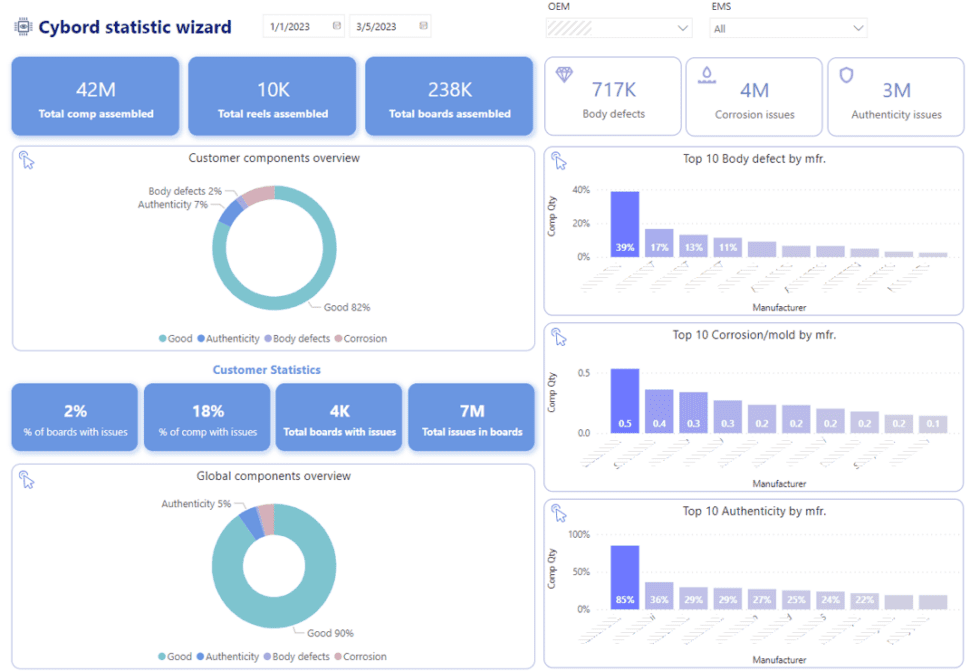Welcome to our Healthcare IT Today Weekly Roundup. Each week, we’ll be providing a look back at the articles we posted and why they’re important to the healthcare IT community. We hope this gives you a chance to catch up on anything you may have missed during the week.
Streamlining Enterprise Network Management and Monitoring. Network infrastructure can be difficult to manage across multiple sites. Healthcare IT Today received a demo from Rajat Mukherji at Spectrum Enterprise on how to monitor network traffic in the hospital and at home – including temperature and humidity sensors in key locations. Read more…
Making Healthcare App Development and FHIR Data Access Easy. Digital health developers shouldn’t have to learn the hundreds of flavors of FHIR implementations and APIs to share data, Patrick Schiess at Darena Solutions told John. That’s the value of platforms that connect to otherwise disparate EHRs and other FHIR data sources. Read more…
Not All Prescription Management and Clinical Decision Support Is Created Equal. Adoption tends to lag because physicians don’t use it and are sometimes annoyed by it, John discussed with Dr. Clement Goehrs at Synapse Medicine. Part of the solution is more seamless integration with EHRs and a better user experience. Read more…
Discussing TEFCA, QHINs, HDUs, and Interoperability With Civitas Health. CEO Lisa Bari sat down with John to discuss why state efforts to address interoperability are as important as national efforts. They also touched on the role of health data utilities as the evolution of the state HIE. Read more…
CIO Podcast: Digital Transformation. Laura Marquez at the University of Utah Health outlined how to define success in digital transformation in healthcare and shared her thoughts on how AI will impact transformation. Read more…
Operational Teams Drive Optimal Health IT System Adoption. Successful health IT system transitions involve more than an organization’s IT personnel. Cynthia Casatelli at e4.health said it’s critical to respect the perspective of department heads, subject matter experts, and end users and make sure they feel included in implementation. Read more…
Protecting Your Organization From a Hidden HIPAA Threat. Up to 80% of employees may not follow risk avoidance policies when translating patient data, largely because they use free online tools, noted Bill Young at SYSTRAN. Transitioning to purpose-built machine translation system improves both the security and the quality of translations. Read more…
Constructing a Responsible AI Framework for Prior Authorization. One in three doctors report adverse patient events stemming from prior authorization issues, and many delays are attributable to AI-generated denials that aren’t reviewed. That points to a need for accountability, equity, and transparency in how AI influences decision-making, according to Niall O’Connor at Cohere Health. Read more…
Having Tackled Workflows and Image Enhancement, Generative AI Targets Diagnostics. AI can reduce radiology turnaround time by 30% and detect 20% more cancers when compared to standard screening. Further increasing AI’s use in radiology means increasing the size and accuracy of the data pool it draws from, said Morris Panner at Intelerad Medical Systems. Read more…
The Must-Haves of a Patient Financial Communication Platform. Half of patients are willing to switch providers for a better billing experience. Steven Dubner at Nordis Technologies recommended providers consider customer communications management that enables personalization, automation, and compliance while meeting patients where they are. Read more…
Featured Health IT Job: Rural Health Clinic Transition Project Manager, a hybrid role based in the Midwest, posted by Stoltenberg Consulting at Healthcare IT Central.
Bonus Features for September 24, 2023: 72% of patients say affordability is the biggest challenge for paying medical bills. Read more…
Funding and M&A Activity:
- Specialty virtual care vendor Summus raised a $19.5 million funding round.
- Data activation vendor IOMED raised €10 million in Series A funding.
- Thoracic CT image analysis vendor Thirona raised €7.5 million in new financing.
- Cancer diagnostics company Ibex Medical Analytics closed a $55 million Series C funding round.
Thanks for reading and be sure to check out our latest Healthcare IT Today Weekly Roundups.


 About Cynthia Casatelli
About Cynthia Casatelli About Bill Young
About Bill Young About Niall O’Connor
About Niall O’Connor
 About Steven Dubner
About Steven Dubner